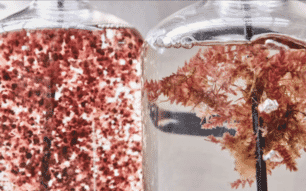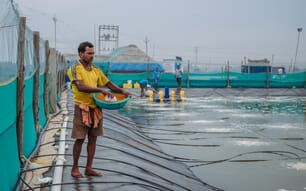The projects, worth £2.9 million will focus on lumpsuckers, a species of fish that is known to eat sea lice, a natural parasite which feed on both wild and farmed salmon.
Scottish salmon is Scotland’s single largest food export, with overseas sales valued at £500 million. As this demand continues to grow, so does the need for continued advancement in innovation and technology in the aquaculture sector.
An industry-wide challenge is the control of natural parasites that attach to wild and farmed salmon and impact the output of salmon farms by slowing salmon growth. Typical measures around sea lice control include husbandry techniques and licensed medicines, but the industry is looking to add new methods. As a biological method of sea lice control, lumpfish can reduce the need for treatment with licensed medicines.
The commercial use of cleaner-fish as a means of sea lice control has gathered significant momentum over the last few years. Like wrasse, lumpsuckers can cohabit with salmon and feed on sea lice, and they have been identified as a complementary species to wrasse in boosting the supply of cleaner-fish to the industry. The outcomes of the two lumpsucker projects announced by the Scottish Aquaculture Innovation Centre will provide the basis for bringing lumpsucker production to a commercial scale.
Lumpfish sustainable supply and deployment project
The first project aims to establish a secure and sustainable supply of lumpfish for Scottish salmon farms and to optimise their deployment for effective sea lice control. It will take a range of technologies that have proof of concept in the laboratory through to prototyping in the commercial environment. Heading the research will be a team from the Institute of Aquaculture at the University of Stirling, the leading aquaculture research and training department in the UK.
SAIC has awarded a grant worth £817,473 to the project, valued at a total £2.44 million.
Other contributions are coming from five commercial partners - Marine Harvest Scotland, Benchmark Animal Health, BioMar, The Scottish Salmon Company and Otter Ferry Seafish - as well as the University of Stirling.
Outputs will include protocols for breeding, feeding and deploying lumpsuckers into salmon farms; new products, such as feeds and vaccines; and knowledge to provide Scotland with a viable, sustainable and efficient source of cleaner-fish for sea lice control.
Lumpfish welfare project
The second project aims to improve the welfare of lumpfish deployed in Scottish salmon farms, through a detailed analysis of the biological needs and disease challenges facing them when they are raised in hatcheries and deployed in salmon pens.
The aim of the research, conducted by Stirling’s Institute of Aquaculture, is to improve the survival and welfare of lumpsuckers and ultimately increase the supply of cleaner-fish into the Scottish salmon industry.
SAIC has awarded a grant worth £120,680 to the £475,851 project, led by Fish Vet Group.
This project involves six commercial partners – the Fish Vet Group, FAI Aquaculture, Scottish Sea Farms, The Scottish Salmon Company, Grieg Seafood Shetland and Cooke Aquaculture - and an academic partner - the University of Stirling. The university partners have identified the potential of applied research to meet the practical needs of the salmon industry in Scotland.
Heather Jones, CEO of the Scottish Aquaculture Innovation Centre, said: “The commercial use of cleaner-fish has been identified as one of the most promising ways to address sea lice control in the Scottish salmon industry. By investing in and accelerating projects like these, which meet the needs of the industry, we aim to increase the productivity and sustainability of salmon farms across the nation. These projects bring together the best academic and industry expertise to drive innovation forwards.”
Professor Hervé Migaud, Director of Research at the University of Stirling’s Institute of Aquaculture, said: “Research into cleaner-fish is of great potential value to the economic development of the Scottish aquaculture industry, and the Scottish Aquaculture Innovation Centre’s support for these two projects could have a tremendous impact. The Institute of Aquaculture is leading world-class research focused on cleaner-fish, and will bring its full range of expertise to address key knowledge< gaps which are limiting the implementation and welfare of lumpsucker fish.”
Jeremy Ryland Langley, Aquaculture and Fisheries Manager, Waitrose, added: “In our partnerships with salmon farmers in Scotland, we encourage the early adoption of innovative practices that support sustainability and good environmental stewardship. The developing use of biological methods to control sea lice is exciting, and we are delighted that these two collaborative projects could open the way for the wider deployment of cleaner-fish on Scottish salmon farms.”




